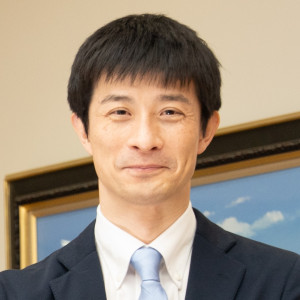Noboru Sasaki

From
In residence at
Imaging, Brain, Neuropsychiatry (iBrain) / INSERM, University of Tours - FR
Host scientist
Jean-Michel Escoffre
BIOGRAPHY
Noboru Sasaki obtained his B.A. degree in Veterinary Medicine form Hokkaido University in 2008. Inspired by his experiences in veterinary clinics, he started his Ph.D. project for developing an ultrasound-mediated drug delivery method in cancer treatment. His Ph.D. thesis was the study of anticancer drug delivery by the combination of a diagnostic ultrasound imaging machine and a clinically approved ultrasound contrast agent. He obtained with high honors his Ph.D. Degree in Veterinary Medicine in 2012 from Hokkaido University. From May 2012 to December 2014, he worked at the Imaging Division of UMC Utrecht, The Netherlands, as a visiting researcher (2012 - Feb 2013) and a post-doc (March 2013 - December 2014). His research projects were to design new delivery protocols for therapeutic macromolecules and to clarify the mechanisms of ultrasound-mediated drug delivery. Dr. Sasaki got a permanent position as an Assistant Professor at the Department of Veterinary Internal Medicine, Hokkaido University, in 2015. He was promoted to an Associate Professor at the Faculty of Veterinary Medicine in 2025. He is currently pursuing his researches on developing ultrasound-mediated technologies for drug delivery and for tissue-stimulation.
PROJECT
Microbubble-assisted ultrasound, a tool for depicting and disrupting blood vessels
Despite the increasing number of drugs and the development of novel-targeted therapies, therapeutic progress remains modest for many prevalent and costly diseases. Major obstacles are the non-specific delivery of drugs and the presence of biologic barriers, including endothelial barriers (e.g., blood-brain barrier). Any targeted and active drug delivery method promoting increased drug bioavailability specifically in diseased tissues, while at the same time minimizing healthy tissue side effects, remains today a major challenge for efficient and safe treatments. Microbubble-assisted ultrasound holds promise for a non-invasive and local drug delivery technology in desired site. Ultrasonically activated microbubbles, employed in medical practice as standard ultrasound contrast agents, transiently increases the vascular permeability and facilitating drug extravasation to the interstitial space and uptake by cells. Although the increase in local extravasation has been reported in various tissues, effects on endothelial barriers of pathological tissues (e.g.,permeability and recovery) and the exact mechanism of the extravasation are controversial. Moreover, the spatial and temporal profiles of the extravasation are obscure. In this context, the aim of this collaboration project is to decipher and explain in-vitro effects of MB-assisted US on the dynamics of endothelial barriers, and the subsequent delivery of molecules with increasing sizes in the surrounding space using 3D cell culture models. This collaborative project provides new scientific insights and a better knowledge of endothelial barrier dynamics, which contribute to increase the effectiveness of drug delivery by MB-assisted US for therapeutic intervention in both human and veterinary clinics.
